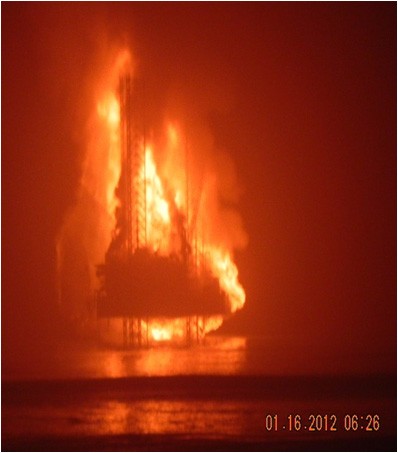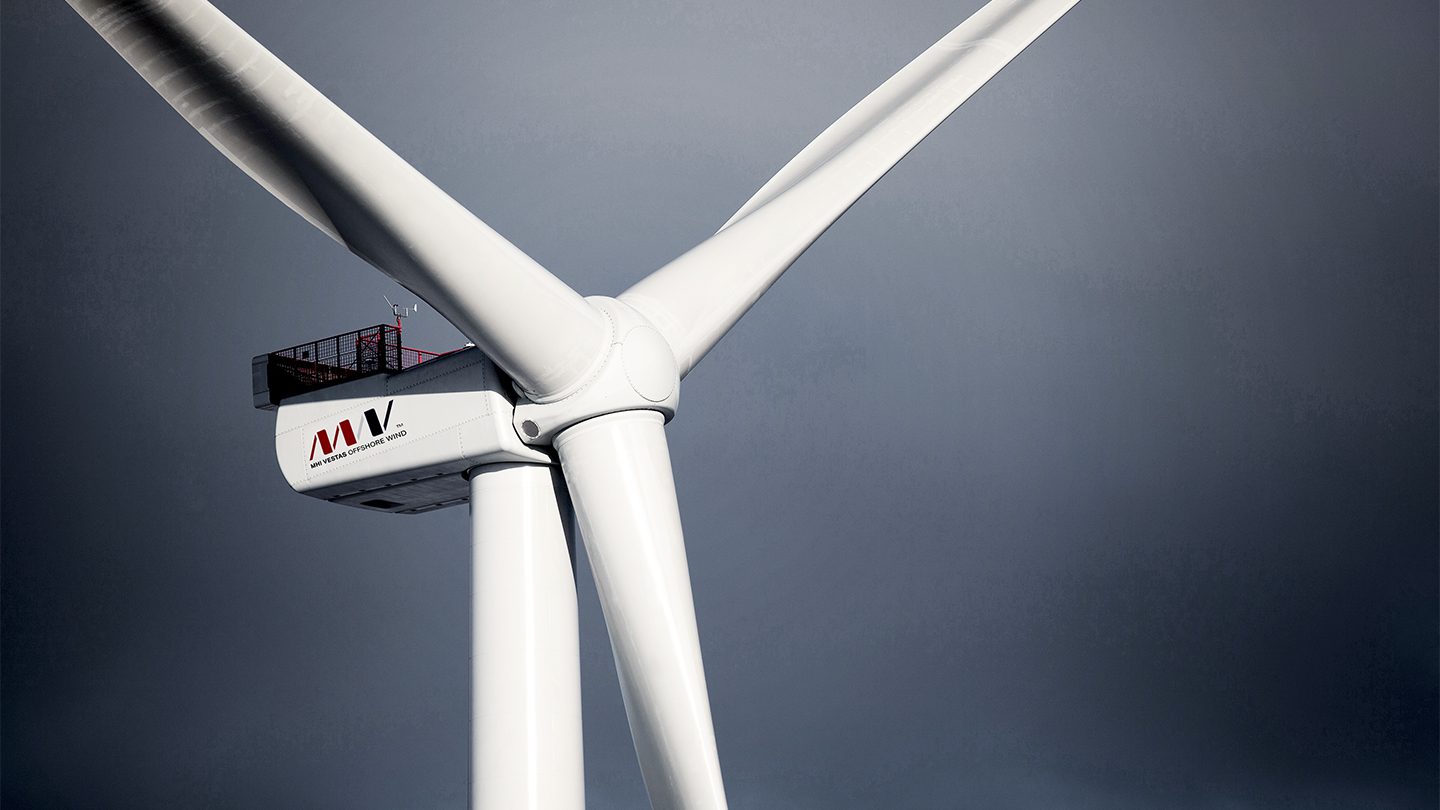KS Endeavor jack-up on fire in 2012. Photo: Chevron
From a drilling safety standpoint, jack-up rigs are inherently more dangerous than floating rigs for two main reasons.
First, if the well blows out and catches fire, there’s no way to unlatch the rig from the wellhead and move off station, thus removing the fuel source. Either the blowout preventer will close and the fire is extinguished, or the rig is going to burn to the waterline. There’s very little in-between.
Secondly, because the blowout preventer is located roughly 60 feet below the rig floor, and not hundreds (if not thousands) of feet below on the sea floor, if the rig crew is unable to detect a “kick,” or influx of gas into the wellbore, before it reaches the blowout preventer (BOP), then it’s pretty much guaranteed that there will be a flammable geyser of mud, gas, and possibly oil, over the rig.
On a deepwater rig, such as the Deepwater Horizon, a huge steel pipe called a riser connects the floating rig to the blowout preventer on the sea floor. There are added dangers in this situation as well, however there are effective means of mitigating these risks.
Do kicks happen often?
A kick is a common well control issue that a driller will contend with dozens, if not hundreds, of times throughout a career in the oilfield. While drilling, natural gas from the surrounding formation will quite frequently enter the wellbore as the rig crew is drilling down into the earth, and this pressurized flammable gas naturally wants to float to the surface.
So imagine a barrel-sized unit of natural gas enters the wellbore at 10,ooo feet below the rig.
According to Boyle’s Law, the volume of gas will double each time the pressure is halved. So at 5,000 feet, it’s expanded to 2 barrels, as it migrates up to 2,500 feet, it’s at 4 barrels, 1,250 feet – 8 barrels, and so on, until the bubble has expanded to the rig floor.
Left unmitigated, this kick can cause serious disaster on board a drilling rig, as witnessed in the case of the Hercules 265, and as seen in the Deepwater Horizon disaster. Another example occurred last January, when the Hercules’ KS Endeavor burned offshore Nigeria.
So how do you know when kick is migrating up a well bore?
While drilling a well, a fine, soupy, and dense mud is continuously being pumped down the drill string (which turns the drilling bit), and it returns up the annulus of the wellbore, where it is then filtered via the “shakers,” and then recirculated back down the drill string. Most of the time it’s a closed loop process, meaning what is pumped down the well, eventually returns back up the wellbore to get reprocessed again. The volume and rate of return of the mud is highly predictable, and is easily calculated.
This scenario changes when a gas bubble enters the well bore.
As bubble migrates up the wellbore, it pushes the drilling mud (and well cuttings) above it up with greater and greater force as it continuously expands. Drillers can sense this situation when they start seeing an increase in the flow rate of mud returning from the well. It’s not a fool-proof system, however. The expansion of gas is exponential as is rises, and an increase in mud returns does not always indicate a kick. Without getting too technical and discussing all the different possible scenarios, the important factor to understand that at the end of the day is that if a kick goes unnoticed, and the rapid gas expansion goes unchecked, a “blowout” is guaranteed to occur.
Did this occur in the case of the Hercules 265?
We’ve contacted Hercules to find out more, but most likely yes. It appears as though the blowout preventer failed to seal off the wellbore by either cutting through the drillpipe with shear rams, or sealing it off with pipe rams.
Unlock Exclusive Insights Today!
Join the gCaptain Club for curated content, insider opinions, and vibrant community discussions.

 Join The Club
Join The Club













